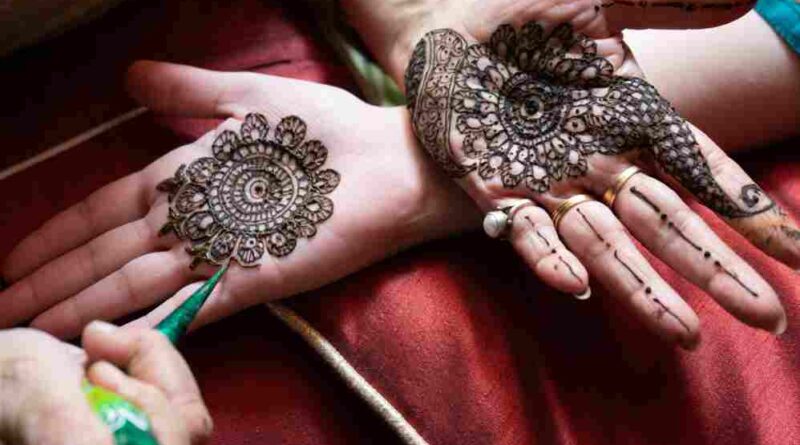Hartalika Teej 2025: Date, Rituals, and How It Differs from Karwa Chauth
The month of Bhadrapada brings with it one of the most spiritually significant fasts for women—Hartalika Teej. In 2025, this auspicious festival will be observed on Tuesday, August 26. Known for its deep roots in devotion, sacrifice, and the eternal love story of Lord Shiva and Goddess Parvati, Hartalika Teej holds a special place in the hearts of married and unmarried women alike.
The Spiritual Significance of Hartalika Teej
Hartalika Teej is celebrated on the Shukla Paksha Tritiya of Bhadrapada month, just a day before Ganesh Chaturthi. According to legend, Goddess Parvati performed intense penance in the forest, abstaining from food and water, to win Lord Shiva as her eternal consort. Impressed by her unwavering devotion, Shiva accepted her as his wife.
To honor this divine story, women observe a nirjala vrat (fast without food and water) during Hartalika Teej. The fast is not only an offering of devotion but also a symbolic way to emulate Parvati’s strength, patience, and determination. Married women keep this fast for their husband’s long life and prosperity, while unmarried women observe it with the hope of finding a loving and dedicated partner.
Hartalika Teej 2025 Rituals
The day begins before sunrise with preparations for the long fast ahead. Women wake up early, bathe, and wear new or traditional clothes—often in shades of green, red, or yellow, colors that represent marital bliss and prosperity.
- Idols of Lord Shiva and Goddess Parvati are crafted from clay or sand and decorated beautifully.
- The puja rituals include offering flowers, fruits, and specially prepared sweets to the deities.
- Women gather in groups to listen to the Teej Katha—the story of Parvati’s devotion.
- Devotional songs and bhajans are sung, and the atmosphere is filled with joy and spirituality.
- The vrat is observed throughout the day and night, with many women staying awake in jagran (night-long devotional singing).
- The fast is broken the next morning after offering prayers to Lord Shiva and Parvati, followed by consuming prasad and traditional dishes.
For many, this vrat is considered extremely powerful, and breaking it midway is believed to diminish its spiritual merit. That’s why women observe it with complete sincerity, even without a sip of water.
Hartalika Teej vs. Karwa Chauth: The Key Differences
While Hartalika Teej and Karwa Chauth are often mentioned in the same breath, given their focus on marital love and fasting, they are distinct in their purpose, timing, and rituals.
| Aspect | Hartalika Teej | Karwa Chauth |
|---|---|---|
| Date in 2025 | August 26, 2025 (Bhadrapada Shukla Tritiya) | October 10, 2025 (Kartika Krishna Chaturthi) |
| Origin & Story | Based on Parvati’s penance to win Shiva as her husband | Centered around a wife’s devotion and moon rituals |
| Type of Fast | Strict nirjala vrat (no food, no water, often overnight vigil) | Fasting without food or water until moonrise, then broken |
| Main Rituals | Clay idols of Shiva-Parvati, storytelling, bhajans, jagran | Moon sighting with sieve, husband offering water/food |
| For Whom It’s Kept | Married women for their husband’s longevity, unmarried women for a good partner | Primarily married women for the well-being of their husband |
In essence, Hartalika Teej is about spiritual devotion and goddess energy, while Karwa Chauth blends fasting with romantic symbolism of the moon and married life.
Cultural Importance Across India
Hartalika Teej is celebrated with great enthusiasm in states like Rajasthan, Uttar Pradesh, Madhya Pradesh, Bihar, and Jharkhand. The vibrancy of the festival is seen in women applying mehndi (henna), adorning themselves with bindi, bangles, and traditional attire, and gathering together in community rituals.
For newly married women, the festival carries even more significance, as it is believed to strengthen the foundation of their married life. Mothers often pass on traditions to daughters, making it a beautiful bridge between generations.
Why Hartalika Teej Resonates Even Today
Even in today’s fast-paced world, Hartalika Teej continues to inspire women because it is not just about rituals—it’s about devotion, inner strength, and feminine energy. The act of fasting without food and water symbolizes endurance and resilience, while the communal gatherings reflect the importance of sisterhood and cultural unity.
Unlike many festivals that revolve around external celebration, Hartalika Teej is deeply personal and spiritual, reminding women of the power of faith and the importance of patience in love and life.
Conclusion
Hartalika Teej 2025, falling on August 26, is a festival that beautifully blends devotion, tradition, and resilience. Its rituals not only honor the eternal bond of Shiva and Parvati but also empower women to express love and commitment in their own lives.
While Karwa Chauth has its own charm later in the year, Hartalika Teej remains a profound reminder that true devotion requires both strength and surrender. For those observing, it is more than just a vrat—it is a celebration of love, faith, and timeless tradition.
Disclaimer
The information and content shared on digitalgithub.com — including articles, blogs, news, guides, and other resources — is intended for general informational and educational purposes only. We do not guarantee the completeness, reliability, or suitability of any information. Always seek the guidance of a qualified professional before making decisions based on the information you read. Use this site at your own risk.

